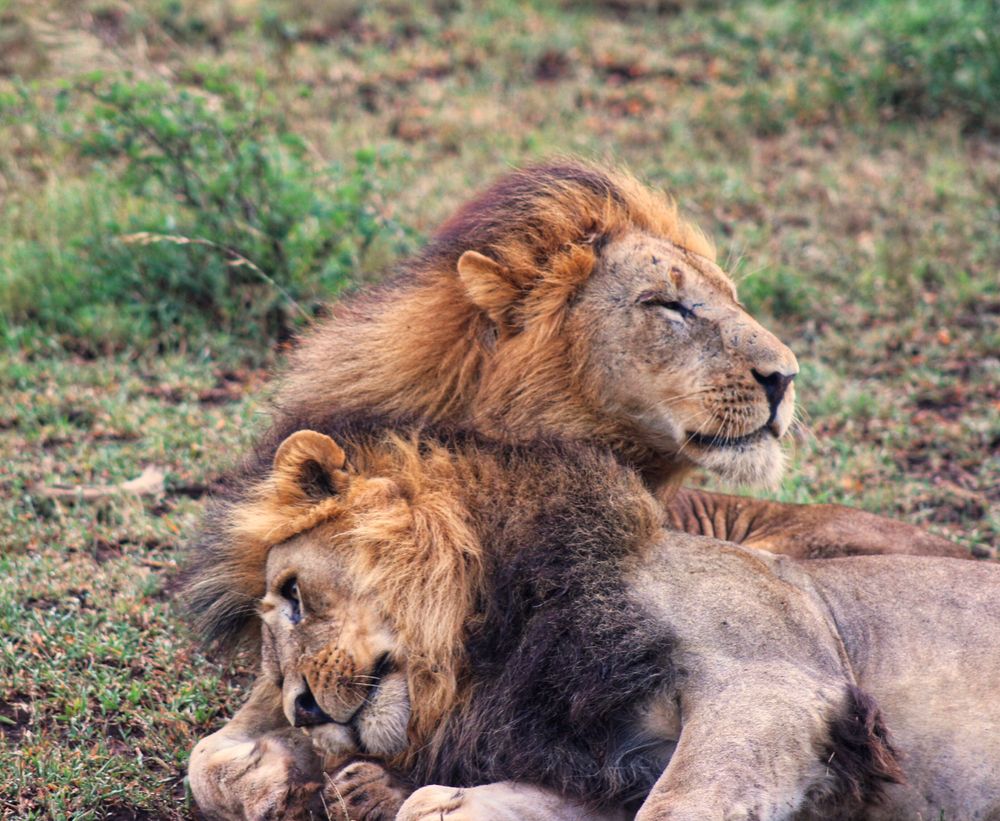Evolutionary scientists have been thinking about same-sex sexual behavior all wrong.
That's the implication of a new study on same-sex behavior in animals. Instead of asking why animals engage in same-sex behavior (SSB), researchers should be asking, "Why not?" the authors said.
If they're right, same-sex sex may not have evolved independently in different animals for adpative reasons. Instead, same-sex sex may have emerged very early in time and could persist simply because engaging in it doesn't cost animals much, evolutionarily speaking.
"Usually, when evolutionary biologists see a trait that's really widespread across evolutionary lineages, we at least consider the idea that the trait is ancestral and was preserved in all those lineages," said Julia Monk, a doctoral candidate at Yale University, who co-authored the new research. "So why hadn't people considered that hypothesis for SSB?"
Related: Alternative Lifestyles in the Wild
In evolutionary science, same-sex sexual behavior has long been viewed as a conundrum: Why would animals spend time and energy doing something sexual that won't pass along their genes to the next generation? And yet, same-sex sexual behavior has been observed in at least 1,500 species, ranging from lowly squash bugs to humans.
(To avoid anthropomorphizing, the researchers don't use the terms "homosexual," "heterosexual," "gay" or "straight" to refer to animal behavior.)
"We can't assign sexuality to animals — we're trying our best to learn about them by observing their behaviors," Monk told Live Science. "And those behaviors shouldn't be mapped onto human cultural and societal contexts."
The assumption that there must be an evolutionary reason for all this same-sex sex has led researchers to search for possible benefits to same-sex behavior. For example, in humans, researchers have found that having a gay son or brother seems to be associated with a woman having more offspring in total. Other studies have posited that same-sex sexual behavior is a side effect of other genes that have reproductive benefits.
In evolutionary biology, the ability of an animal to reproduce given its environment is called fitness. It's entirely possible that in some species, same-sex sex could have fitness benefits, Monk and her colleagues wrote in their paper, published Nov. 18 in the journal Nature Ecology & Evolution. But these evolutionary benefits may not be required for same-sex sexual behavior to exist.
Imagine, instead, that the earliest sexually reproducing animals simply tried to mate with any and all members of their species — regardless of sex. This might have been a logical pathway for evolution, because all the bells and whistles that distinguish males from females are energetically costly to evolve. So any effort expended on mating with the same sex would be compensated for by not spending energy evolving and maintaining distinctive secondary sex characteristics, like differing colors, scents and behaviors. Those sex-distinguishing traits may have all come later in the evolutionary chain, the authors argued.
In this formulation, same-sex and different-sex sexual behavior would have started out on an equal footing, early in animal evolution. This could explain why same-sex sex is so common throughout the animal kingdom: It didn't evolve multiple times independently, but was instead part of the fabric of animal evolution from the start.
The new hypothesis undercuts old assumptions about same-sex behaviors, said Caitlin McDonough, a doctoral candidate at Syracuse University and a study co-author. Much of the research done on these sexual behaviors assumes that same-sex sex is costly for animals and that different-sex sex is not costly, she said.
"You really need to go through those assumptions and test the costs and benefits of both behaviors in a system," McDonough said.
If same-sex behaviors go back to the roots of animal evolution, the fact that these behaviors are so common today makes sense, Monk said.
"If you assume a trait like SSB is a new development and has high costs, it's going to be really hard to understand how it could become more and more common from those low initial frequencies," she said. "It would have to have really large fitness benefits, or be otherwise impervious to natural selection, for that outcome to be probable.
"On the other hand, if you assume a trait is ancestral and was originally common, and it has low costs, it's much more likely that it would remain widespread to this day, even if it doesn't seem to contribute much to fitness."
One piece of evidence supporting this hypothesis is that some echinoderms, including sea stars and sea urchins, engage in same-sex sexual behavior. Echinoderms evolved early in the history of life, likely in the Precambrian period more than 541 million years ago.
But other evidence is slim, largely because scientists haven't systematically studied same-sex sexual behavior in animals. Most observations have been accidental, and biologists have often viewed sex between two animals of the same sex as irrelevant or improper to note, Monk said. Sometimes, researchers automatically assume that same-sex behavior isn't really about sex but instead is about dominance or bonding. And often, if two animals are observed having sex, they're assumed to be male and female without any confirmatory evidence, McDonough said.
"The science that we do is really informed and influenced by cultural biases," she said.
Thinking of same-sex sexual behavior as a standard part of the animal repertoire would change how researchers approach the study of the evolution of these behaviors. The next step, Monk said, would be to gather more data on the prevalence of same-sex behavior in animals. Then, researchers could compare species from across the tree of life to determine if all linages show same-sex behavior. If so, it would strengthen the argument that same-sex sexuality was part of life for the ancestors of all of today's sexually reproducing animals.
- 20 Weird Dog and Cat Behaviors Explained by Science
- 10 Amazing Things You Didn't Know about Animals
- There's No Such Thing as a 'Gay Gene,' Massive Study Concludes
Originally published on Live Science.

